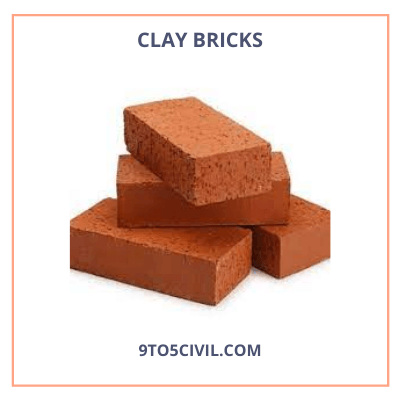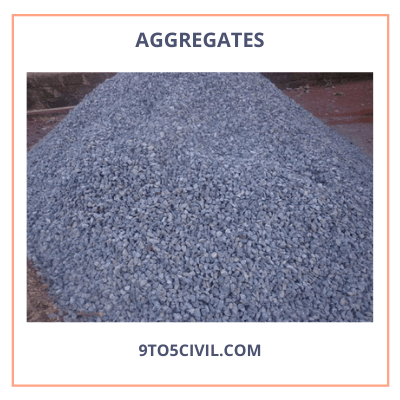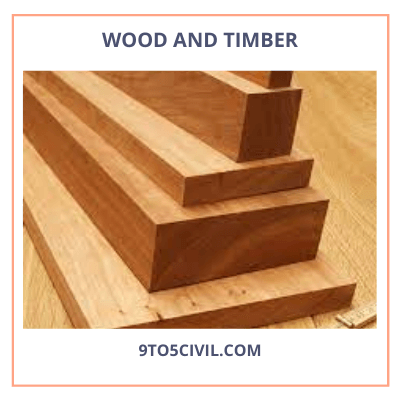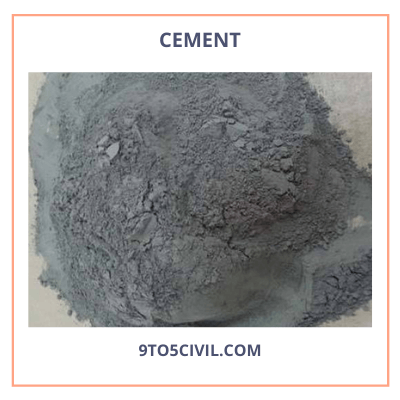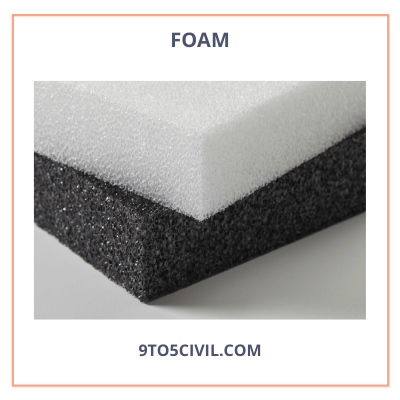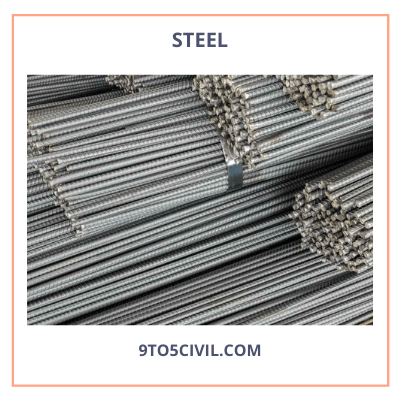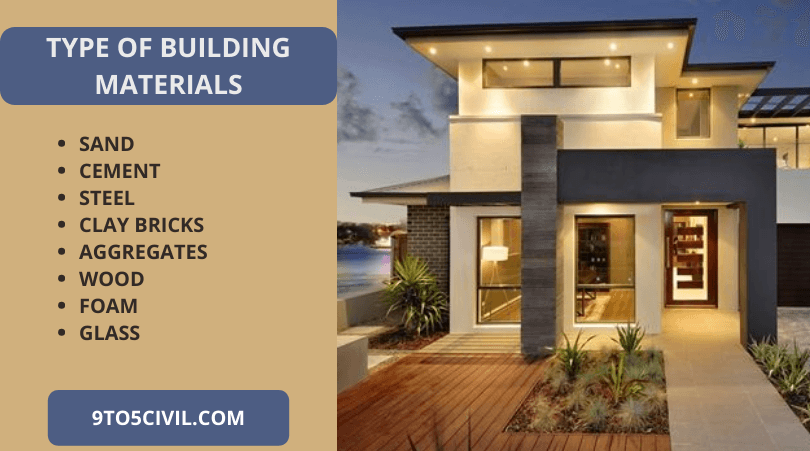
What Is Building Materials?
Materials used for construction purposes such as wood, concrete, steel, cement, aggregate, bricks, clay, metal, etc. are called building materials. It usually uses a variety of materials for construction purposes
In the old days, people used bricks, or wood, for building construction. But in the modern age, engineers have learned to use the right materials for high-rise buildings. Materials are selected for any building based on the client’s budget and building projects.
Various building materials are used to create a quality structure for any building. The construction of any building is based on its need. Therefore managers and field engineers for the project should carefully analyze for the required materials.
The Importance of Selecting the Right Building Materials
- The quality of a building made of suitable building materials has a big impact on the life of the building. Many problems arise in construction when materials are cheap and low. And the life of the house will not last long.
- The choice of the right building materials to use is often overlooked. of building materials.
Material List to Build a House
Here is a list of basic materials for building a house. The exact materials needed may vary depending on the size, design, and location of your home, as well as local building codes and regulations. It is important to consult with a qualified contractor or architect for a comprehensive and accurate materials list for your specific project.
Foundation:
- Concrete blocks or poured concrete
- Rebar (reinforcement bars)
- Concrete mix
- Waterproofing membrane
- Drainage system (such as gravel, drain tile, and sump pump)
Structural Framing:
- Lumber (such as studs, joists, beams, and headers)
- Plywood or OSB (oriented strand board) for sheathing
- Nails, screws, and/or bolts for fastening
Exterior Walls:
- Siding (such as vinyl, wood, fiber cement, or brick)
- Insulation (such as fiberglass batts, blown-in cellulose, or foam)
- Vapor barrier
- Exterior trim (such as fascia, soffit, and corner boards)
- House wrap or building paper
Roofing:
- Roof trusses or rafters
- Roofing underlayment (such as asphalt felt or synthetic)
- Roofing shingles, tiles, or metal panels
- Flashing (such as drip edge, valley, and chimney flashing)
- Ventilation (such as ridge vents or soffit vents)
Windows and Doors:
- Windows (such as vinyl, wood, or aluminum)
- Exterior doors (such as entry doors, patio doors, and garage doors)
- Door hardware (such as locks, handles, and hinges)
Plumbing:
- Pipes (such as PVC, copper, or PEX)
- Fittings (such as couplings, elbows, and tees)
- Valves (such as shut-off valves and pressure regulators)
- Plumbing fixtures (such as sinks, faucets, toilets, showers, and bathtubs)
- Water heater
Electrical:
- Electrical wiring (such as Romex or conduit)
- Electrical outlets, switches, and junction boxes
- Circuit breaker panel
- Light fixtures and bulbs
- Smoke detectors
- Electrical tools (such as wire cutters, strippers, and testers)
HVAC (Heating, Ventilation, and Air Conditioning):
- HVAC system (such as furnace, heat pump, or central air conditioner)
- Ductwork (such as metal or flexible ducts)
- Vents and grilles
- Thermostat
Insulation:
- Insulation material (such as fiberglass batts, blown-in cellulose, or foam)
- Insulation for walls, attic, and floors
Interior Finishes:
- Drywall or plaster
- Paint or wallpaper
- Flooring (such as hardwood, laminate, tile, carpet, or vinyl)
- Baseboards and crown molding
- Interior doors and trim
- Cabinetry (such as kitchen cabinets, bathroom vanities, and built-ins)
- Countertops
- Lighting fixtures and bulbs
- Hardware (such as knobs, handles, and hinges)
Miscellaneous:
- Nails, screws, bolts, and other fasteners
- Adhesives (such as wood glue or construction adhesive)
- Sealants (such as caulk or weatherstripping)
- Insulation for pipes and ducts
- Gutters and downspouts
- Exterior landscaping (such as grading, sod, or plants)
- Appliances (such as refrigerator, stove, dishwasher, washer, and dryer)
- Furniture and decor
Additional materials may be required depending on the specific design, features and finishes of your home. So you should hire a qualified contractor or architect.
Type of Building Materials
The building material used in construction is described as follows,
1. Mud and Clay in Building Material
- Mud is the result of water and soil dence mixing. The formation of mud is due to soil erosion after rainfall near rivers or water sources. After drying for a while, the mud hardens to form mud.
- Mud is a semi-liquid material used in building construction. The use of mud sticks to coats, seals, or other materials due to its properties. Depending on the use of mud, it has been given many different names. The various names include slurry, mortar, plaster, stucco, and concrete.
Application
- In the early years, stone, mud, and other materials were used as building materials. In the old days, mud was used to fill the gap between bricks and stone.
- A building built using mud as a building material was not as strong as concrete, but a mud house is able to keep the house cool during the summer.
- In general, materials such as stone, gravel, lime, and bitumen can be mixed with soil and water to form walls, floors, and ceilings.
2. Sand in Building Material
- Sand is naturally composed of mineral particles due to the erosion process of the rock. The most common component of sand is silica, which is usually found in the form of quartz.
- The formation of sand is due to changes in the climate of the rocks. According to natural resources, sand is classified as follows: Pit sand, River sand, Sea sand.
Application
- Sand is mainly used as a building material in works like concrete, masonry, plastering, waterproofing and, china mosaic, etc.
3. Clay Bricks in Building Material
- Mud bricks are known as clay bricks in building construction. In Spanish territory, mud-brick construction is commonly called adobe.
- Mud brick is prepared by air drying. Mud brick is made from a mixture of loam, mud, sand, and water.
- Mud bricks have been used in buildings and other structures for thousands of years.
- We have also been doing Cooking Pits and Ovens in rural areas.
- Mud brick is used as a paver as a path and as a border in the garden.
4. Aggregates in Building Material
- Aggregate is a building material. Aggregate is used to form bases for roads, bridges, and buildings. Aggregate is used in more than 90% of asphalt pavements and up to 80% of concrete mixes.
- The size of aggregate as building material ranges from 4.75 mm to 18 mm. Aggregate with rough and non-glassy texture helps to get good strength with cement paste.
Generally, the use of aggregates for concrete is classified into 2 types: –
- Coarse aggregates:- >4.75 mm
- Fine aggregates:- <4.75 mm.
5. Stone or Rock in Building Material
Rock is a naturally available material on the construction site. It can be used in construction as outdoor in various places. The stone used for construction should be hard, durable, free from cracks. So that the strength and durability of the rock do not change.
Stone for construction can be used in different places depending on the need of their property.
There are many different types of stones available in different places. Stones such as basalt, marble, limestone, sandstone, quartzite, travertine, slate, guinea, laterite, and granite, etc. can be used as building materials.
Stone is the oldest building material used in the world. Rock is used in important monuments and buildings due to its strength and durability. It is also used in places of worship, forts, and palaces.
Some well known different types of stone are as follows
- Marble
- Granite
- Sandstone
- Slate
- Laterite
- Limestone.
6. Wood and Timber in Building Material
Wood is the most useful and important building material for construction. It is very important to choose from different types of timber.
Timber must be strong, tough, and durable to be used for various purposes in the building. The use of wood in wooden doors or windows contributes to the interior decoration and appearance.
The use of teakwood is most appropriate in the construction of buildings. Takewood is naturally durable with good quality. Builders are preferred for their various characteristics, durability, and natural appearance.
Application of Timber
- Door/windows frame and shutters
- Cupboard
- Flooring
- Cabinets
- Construction of earthquake-proof buildings.
7. Thatch in Building Material
Thatch is a layer of naturally occurring organic matter that accumulates on the lawn around grass plants. Thatch is a mixture of living and dead plant material, including stolons, rhizomes, and roots.
A small amount of thatch can work effectively against temperature and humidity fluctuations. This method was commonly used for roofing. Thatch is used in developing countries because of its low cost. In developed countries, the home uses thatch for a rustic look.
Application
Thatch is commonly used for roofing materials with properties such as good impression, good water resistance, good wind resistance.
8. Cement in Building Material
Cement is used for construction as a binder. Cements used in construction are usually based on lime or calcium silicate. Which can be classified as non-hydraulic cement and hydraulic cement based on the process of setting of cement in the presence of water.
Non-hydraulic cement does not set in wet conditions or underwater. This type of cement reacts with carbon dioxide in the air. Hydraulic cement is formed due to a chemical reaction between dry elements and water. This type of cement is very durable in water and resistant to chemical attacks.
Cement is used in construction for some of the following purposes
Concrete is used for foundation, beam, column, chajja, lintel, etc. for building construction.
- Cement + sand = Mortar. Mortar is used in plaster, masonry work, waterproofing, etc.
- Cement slurry:- Slurry is used for fixing tiles.
9. Foam in Building Material
Synthetic polystyrene or polyurethane foam is used in construction. Foam is light weight and an excellent insulator. It is commonly used in buildings as a structural expansion joint.
Applications of Foam
Foam is used as an insulator material in homes or buildings.
10. Glass in Building Material
- Glass is a product of a mixture of sand and silicates. Glass is widely used as a building material in modern times.
- Glass is commonly used in windows panels. Which has a transparent surface. The purpose of which is to bring light into the building. And is able to keep outdoor weather.
- Nowadays glass is used for architectural purposes in the outer part of the height of modern buildings.
Applications of Glass
- Float glass is used in the front of the shop and as railing partitions.
- Laminated glass is used in bridges, stairs, floor slabs, etc.
- In addition, clear vision type glass is used in houses for elevation purposes.
- Double glazed glass is used for insulation purposes in houses.
11. Gypcrete in Building Material
- Gypcreten is commonly used in wooden frames as a building construction material. It is also used in concrete construction for fire rating, noise reduction, heat absorption and floor leveling.
- Gypcrete is used as a flooring material by architects and designers. Gypcrete is used as a building material due to its properties and advantages.
Applications of Gypcrete
- Flooring
- Ceilings
- Rapid wall
12. Fabric Structures in Building Material
Fabric is used in many places as a building material. Nowadays fabric structure is used to provide users with a variety of aesthetic building designs. Fabric as a building material is gaining popularity in modern architecture and construction for its unique properties and versatility.
Fabric structures are a type of tensile structures. The fabric structure can be given a three-dimensional shape. Fabric Structure can be used as a ceiling, shading, or decoration. Fabric structures can cover a larger area without columns than traditional roof systems.
Usually, fabric structures are made from real fabric material. Usually, the fabric can be coated and laminated with synthetic materials to increase its strength. In addition properties such as durability and environment can be provided.
Application of fabric:-
- This type of building material can be used to cover a large area and build stadium domes.
- This type of building material is used for tents and low tension frame structures.
13. Steel in Building Material
Steel is used in construction as a strong building material with excellent strength in both tension and compression. It is especially used for the infrastructural structures of tall buildings and large industrial.
Structural steel is available in various standard shapes such as angles, c- beams, and C-channels in various elements. These shapes can be designed into any shape by welding with each other. Since steel is capable of resisting large forces and distortions it can be used to make high-strength bolts for fixing the structure.
Steel is the most expensive building material, so it is the responsibility of the structural engineer to choose the economic size and shape according to the actual load of the building.
Steel is used as reinforcement in concrete to provide tensile strength to the component. Steel reinforcement is used because the concrete is weak in tensile strength.
Applications of Steel
- Pipe fittings, manhole covers
- Roofing and accessories
- High strength bolts
- Kitchen platforms
- Stair.
14. Plastic in Building Material
Different types of plastic materials are being used in the construction industry. The following are some examples of plastics used in buildings.
- Expanded Polystyrene
- Polycarbonate
- Acrylic
- Polyethylene
- Polypropylene
- Polyvinyl Chloride.
As plastic is light weight, it can be easily transported and worked. plastic does not rot. The plastic surface is durable, knock-and scratch-resistant. Plastic material can be easily removed and recycled easily.
Applications
1. Pipes
- Plastic pipes are used in electrical conduits, rainwater, and sewage pipes, plumbing, gas distribution, etc.
2. Cables
- Plastic is used to make PVC insulation on cables and in insulation tapes.
3. Windows & doors
- Plastic is used in the section for doors and windows and panels.
4. Storage tanks.
Like this post? Share it with your friends!
Suggested Read –
- 7 Best Garage Ceiling Fan
- What Is the Best Insulation for an Attic?
- 10 Best Brands of Garage Door Openers
- What Is Road Pavement? | Function of Road Pavement | Ideal Road Pavement Requirement | Difference Between Rigid Pavement and Flexible Pavement
- 7 Best Mosquito Sprays for Yard
- 23 Different Types of Doors | Functions of Doors
- Top 5 Best Outdoor Fans for Mosquitoes
- 10 Lightweight Plywood Alternative
- What Size Staples for Insulation?
Rock can be used directly without treatment or as a raw material to create other materials. The types of stone and its derivatives most used materials for construction include granite, marble, limestone, slate, sandstone, gravel, lime, plaster, cement, mortar, concrete, sand, and glass. Concrete is the most widely used material of construction in the world, making it a good starting material to get to know. However, it also has significant environmental impacts, including a carbon footprint of up to 5% of worldwide emissions. Cement, Reinforced Bars, Sand, Brick, Aggregates, Clay are the most common material that are used in construction. The quality of the materials determines the strength and longevity of the building therefore, it cannot be ignored or compromised. Wood, cement, aggregates, metals, bricks, concrete, clay are the most common type of building material used in construction. The choice of these are based on their cost effectiveness for building projects. The cheapest way to build a home is to design a simple box. Sticking to a square or rectangular floor plan makes the building and design simple. Generally speaking, building up is cheaper than building a sprawling one-story home, so you may want to consider planning for a multiple-story home if you need more space.What Are the Material Resources Used in Construction?
What Is the Most Common Construction Material?
What Materials Are Needed to Build a House?
What House Building Materials Are Used to Build Houses?
What Is the Cheapest Type of Home to Build?
 Skip to content
Skip to content 

